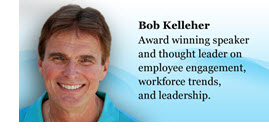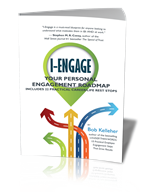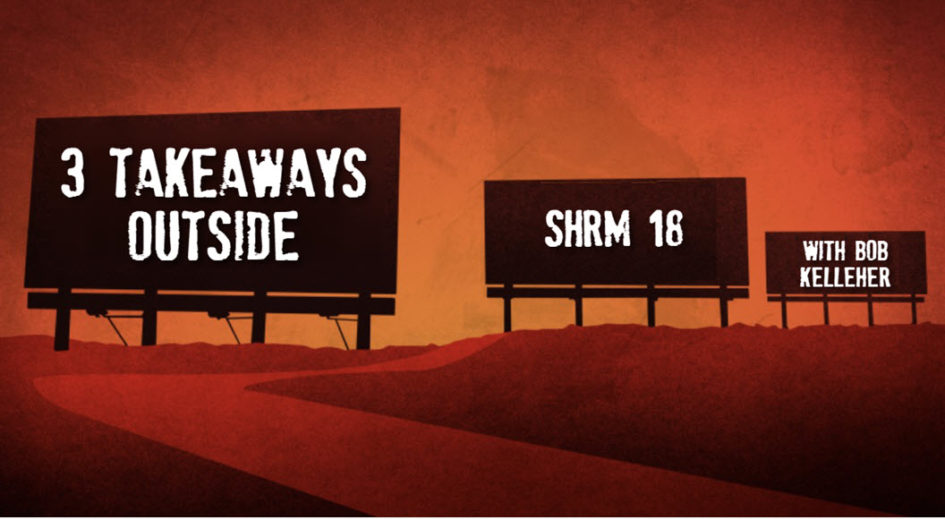Last week I posted a podcast with Jim Kight of Focus 3 who will be presenting at SHRM 2018 in June about his 5-Driver System. If you haven’t listened in, it is worth your 17 minutes. Tim does a wonderful job.
 As part of my work ramping up to SHRM18 I also spent some time on the phone with Bob Kelleher. We couldn’t do a podcast, but we did have a wonderful chat about his views on employee engagement and his session at SHRM 18.
As part of my work ramping up to SHRM18 I also spent some time on the phone with Bob Kelleher. We couldn’t do a podcast, but we did have a wonderful chat about his views on employee engagement and his session at SHRM 18.
He will be presenting a “mega-session” on Wednesday June 20 from 10:00 am – 11:15 am CDT. His topic is “A 10-Step Employee Engagement Roadmap to Building an Engaged and Productive Workforce.”
Lots of words, but than again, engagement is a mission critical issue for organizations these days and deserves as many words as it can get.
And Bob is just the guy to talk about engagement. He’s no Johnny-come-lately to the topic, having been an HR practitioner, a VP HR and a CHRO before launching his own practice based on the successes he had in the REAL world. Bob knows what works.
We chatted for about 30 minutes and 3 things stood out to me in from our conversation (trust me, this list could have been 300).
- Engagement is a MUTUAL You can’t have an engaged workforce with out both sides playing a role. If you don’t get the employees to be part of the process it will fail. Too often companies focus on “satisfiers” things that make employees happy but not engaged. It reminded me of the difference between a TV and a computer. TV is a lean back medium… low engagement. But a computer is a lean in media – I must engage to get any value from it. Getting your employees to engage is part of the puzzle and one many companies miss.
 Bob also believes managers have a huge role to play in engagement. In fact, he believes the #1 thing most companies do wrong when it comes to engagement is picking the wrong people to be managers. Companies spend far too little time ensuring managers are chosen correctly (ie: NOT functional experts) and trained appropriately. If you want employee engagement –work on the manager–employee interface. THAT is where engagement happens. And as Bob pointed out to me, today’s management is more than just managing the employee at work. His book I-Engage talks about how managing for engagement is different today. To quote from a book description on amazon:
Bob also believes managers have a huge role to play in engagement. In fact, he believes the #1 thing most companies do wrong when it comes to engagement is picking the wrong people to be managers. Companies spend far too little time ensuring managers are chosen correctly (ie: NOT functional experts) and trained appropriately. If you want employee engagement –work on the manager–employee interface. THAT is where engagement happens. And as Bob pointed out to me, today’s management is more than just managing the employee at work. His book I-Engage talks about how managing for engagement is different today. To quote from a book description on amazon:
“Engagement is dependent on a variety of factors that we can’t leave behind when we leave home: our health and wellbeing and that of our children, partners, and elders; our personal values; our intrinsic motivators. These deeply personal factors, as well as fixed traits about us, affect engagement at least as much as work-only factors such as salary and benefits.”
Engagement isn’t as cut and dried as we’d like it to be – and it will take a much more focused approach on management training to make this happen.
- Counter most of the “research” today on millennials and Gen X Bob had a very smart point of view on what’s changing with respect to concerns for those generational cohorts. While many says that GenY/X are less focused on money Bob believes (and now I do to) that money will become more important as these cohorts age – from kids going to college to the needs of aging parent. Money will be a huge factor in the decisions they make. This isn’t to say that the intrinsic stuff is less important – just that companies will need to find ways to connect progress, achievement and growth to more money. Or at least to things that reduce the need to focus on money. My own thoughts go to providing elder care benefits, long-term care insurance, etc. In other words – know that your employees who are aging or have delayed “adulthood” and parenting until later (yeah – I’m looking at you Gen Y) will need some help in this area. I really want to unpack this idea more at some point.
Bob also talked about something else I found very interesting – a 6-minute prescriptive assessment to identify key engagement drivers and preferred work styles called “The Engagement Accelerator.” It’s a new tool that an employee can engage with that will help summarize and categories their engagement drivers. It also provides summaries for the manager and the HR department. I think this is a perfect way to start and engagement effort because most employees really don’t know what helps them engage and when managers know what the employees value in engagement they can tailor their approach to their employees personally. The holy grail of engagement.
As a final question, I asked Bob why you should attend his session.
He said his point of view and his process is based on his experience as a PRACTITIONER. He has been in your seat. He knows exactly what you’ve been through and are going through (and WILL go through).
His process is proven in the real world. No “it should work” – his process has proof it works.
What he talks about is pragmatic and simple. He will outline specific and doable steps you can put in place easily and quickly. In fact, he used a phrase I will steal repeatedly…
Simplicity sticks – complexity repels.
That may be the only thing you need to hear.
Take an hour and 15 out of your time at SHRM 18 and engage with Bob at his session June 20 at 10:00 am CDT. I think you will find it entertaining and engaging (pun intended!)
Bob’s Digital Footprint:
Website: https://employeeengagement.com/
Twitter: https://twitter.com/BobKelleher
LinkedIn: https://www.linkedin.com/in/bobkelleher





Recent Comments